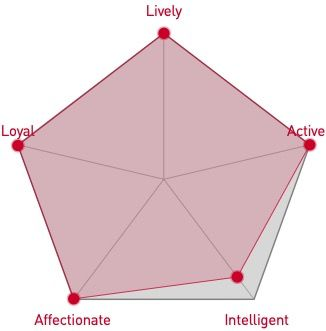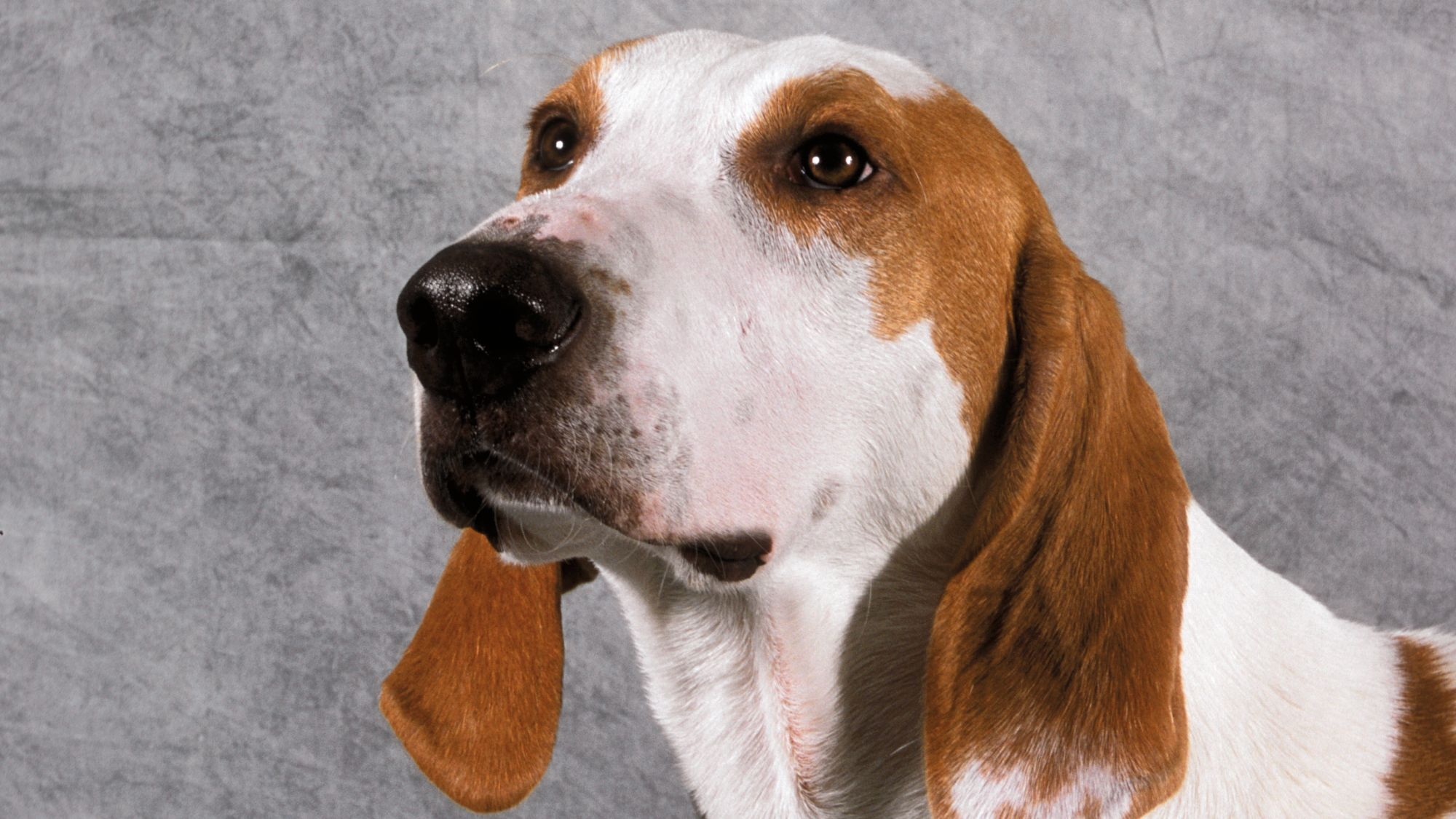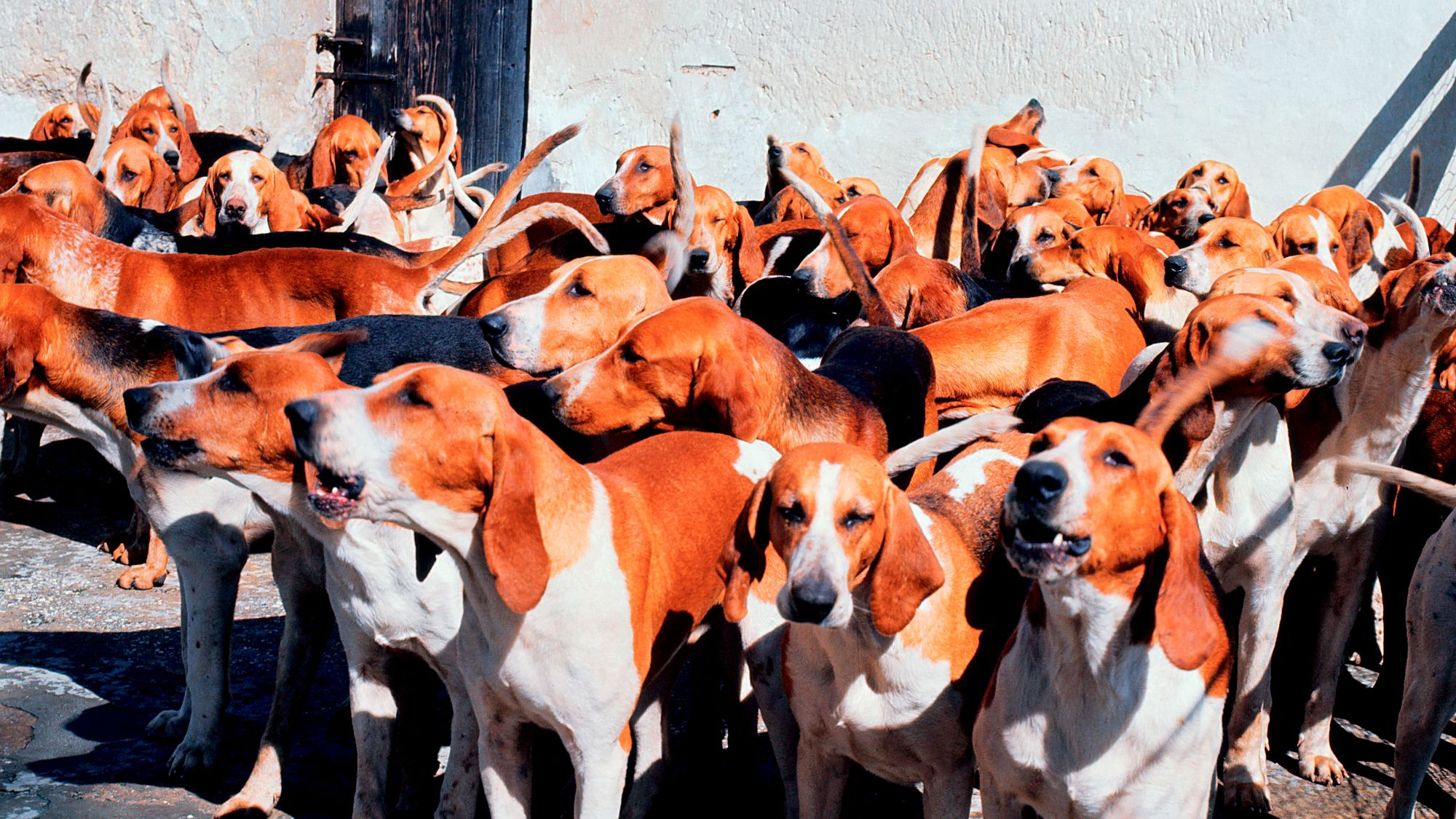
Let's talk French White and Orange Hounds
Noble yet uncomplicated, the French White and Orange Hound comes with a list of super attributes that originally made them a sought-after hunting dog but one who can align themselves domestically, given the right conditions. Used to travelling with their fellow dogs, this rustic, bi-coloured scenthound was developed back then as a keen field dog and is still today most content when fully occupied. The French White and Orange Hound is very rare, even in their homeland of France, one of the Chiens Français, a group of three native breeds.Official name: French White and Orange Hound
Other names: None
Origins: France

| Drooling tendencies: |
|
Warm weather? | |
| Shedding level: | 
|
Suited to apartment living? | 
|
| Energy level (high, low, medium) *: | Moderate | Family pet? * |
 |
| Compatibility with other pets: | Can stay alone? * | 
|
* We advise against leaving pets alone for long stretches. Companionship can prevent emotional distress and destructive behaviour. Speak to your veterinarian for recommendations.
Every pet is different, even within a breed; this snapshot of this breed’s specifics should be taken as an indication.
For a happy, healthy and well-behaved pet, we recommend educating and socialising your pet as well as covering their basic welfare, social and behavioural needs.
Pets should never be left unsupervised with a child.
All domestic pets are sociable and prefer company. However, they can be taught to cope with solitude from an early age. Seek the advice of your veterinarian or trainer to help you do this.


| Baby age: | Birth to 2 months |
| Puppy age: | 2 to 12 months |
| Adult age: | 1 to 7 years |
| Mature age: | 7 to 10 years |
| Senior age: | From 10 years |
1/7
Get to know the French White and Orange Hound
All you need to know about the breed
A kind of French equivalent of the American Foxhound, the French White and Orange Hound is a celebrated hunting hound with a keen nose and a liking for their posse. The breed was originally used for hunting so is accustomed to the pack, which means they’ll fit right into the human one with ease.
Oddly enough, the French White and Orange Hound is not well-known at all in France, let alone elsewhere. But those who are familiar with this genial dog know they can make a great addition to families. The breed is famed for their great stamina and ability to trot along for several miles at a clip.
As good natured as the French White and Orange Hound may be, one sharper characteristic is their tendency to bay. They are used to being hot on the trail, thus using their voluminous voice to alert owners in the distance. Today’s French White and Orange Hound is very much still used in field sport but can adjust to more domestic situations. They just need room to run, an average of two hours a day, and an equally active owner.
2/7
2 facts about French White and Orange Hounds
1. A rare breed, indeed
There are only approximately 1,000 French White and Orange Hounds registered in the world, which makes them quite difficult to find. They’re worth tracking down though, being a dog with a superb temperament and terrific character traits.
2. Point those toes
Years of breeding the French White and Orange Hound brought about the dog’s pointy toes, believe it or not, similar to that of a wild hare. The shape provides them with a light and energetic gait, helpful in carrying them forth in the field, where they find themselves quite often.
History of the breed
The very rustic French White and Orange Hound is a beloved breed, hailing from rural France. A traditional hunting dog, they are said to descend from the Billy and the now-extinct Hound of Saintonge breeds. Their history is hard to trace though, since the breed has been in existence for hundreds of years, well before written records were customarily kept.
After the turn of the 20th century, lovers of the French White and Orange Hound decided to establish them as one of three distinct breeds, along with the French White and Black Hound and French Tricolour Hound.
In 1957, a committee in France divided all French hounds into two groups, the Anglo-French and French, the French White and Orange Hound being part of the latter (no longer descended from English bloodlines). The breed is recognised by the Fédération Cynologique Internationale and was registered by the United Kennel Club in 1996.

4/7
From head to tail
Physical characteristics of French White and Orange Hounds
1. Ears
Low-set ears, supple, slightly curled.
2. Body
Medium-sized, muscular body, broad chest.
3. Coat
Short, close-lying coat, hallmark orange and white colouration, occasional lemon and white.

5/7
Things to look out for
From specific breed traits to a general health overview, here are some interesting facts about your French White and Orange Hound

6/7
Caring for your French White and Orange Hound
Grooming, training and exercise tips
The short two-colour coat of the French White and Orange Hound is charming to behold and an ease to groom. Weekly brushing is enough to rid them of dead hair. As an outdoorsy dog, the French White and Orange Hound may need baths often but use your best judgement in order to maintain the natural oils in their coat. Clean their long ears weekly and trim nails to keep their active body well-balanced. Regular teeth brushing will prevent tartar build-up.
The French White and Orange Hound was originally bred as a hunting dog so is used to long stretches of lots of exercise; two hours of daily outings, then, are essential at a minimum. Walks should be on-leash as their prey drive will lead them to follow their nose too far. A pack dog like the French White and Orange Hound takes to training well. They’re used to receiving direction and having their wits about them so learning should be a breeze. Starting early is best, of course, even for the most obedient French White and Orange Hound.
7/7
All about French White and Orange Hounds
Although initially bred for and still kept by many as a hunting dog, the French White and Orange Hound can adjust to family life splendidly. They like occupying their time with humans as well as fellow canines, and anything outdoors – with you involved – pleases them to no end. Your French White and Orange Hound will not be a watchdog for sure, since their guarding capabilities aren’t terribly up to snuff.
There’s a reason the French White and Orange Hound is renowned for their pleasant personality and athleticism: Bred for endurance and hours spent outside, their lean, muscular frame can travel long distances in the pack for many hours accompanying their owner. The breed is cooperative as well as keen, intelligent, and intuitive.
translations.feature.breeds.otherbreeds
Read more on this topic

How your dog's nutrition needs change with age

How to adopt a dog

Things to consider before getting a dog
Sources
1 - Veterinary Centers of America https://vcahospitals.com/
2 - Royal Canin Dog Encyclopaedia. Ed 2010 and 2020
3 - Banfield Pet Hospital https://www.banfield.com/
4 - Royal Canin BHN Product Book
5 - American Kennel Club https://www.akc.org/


